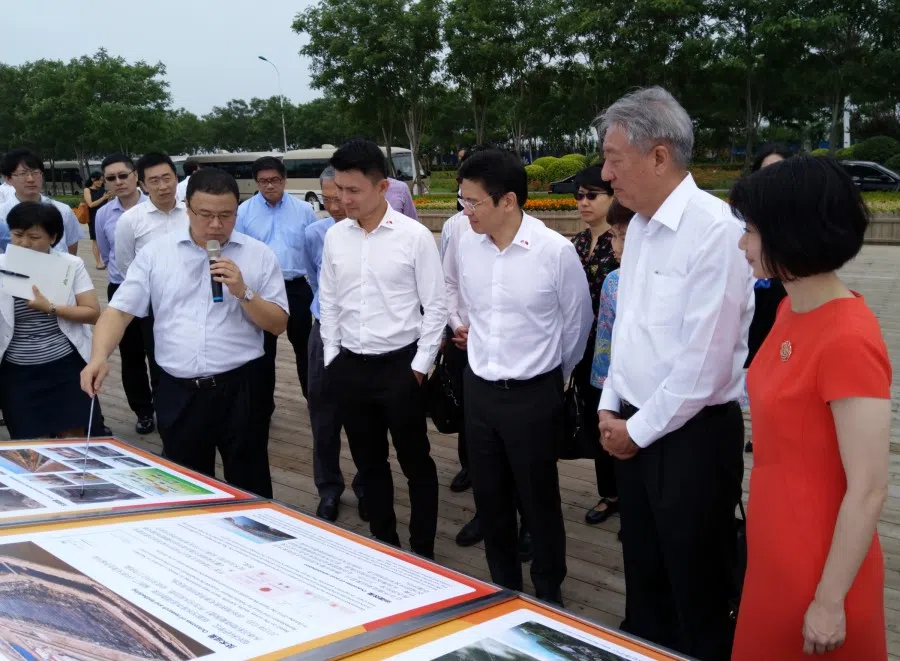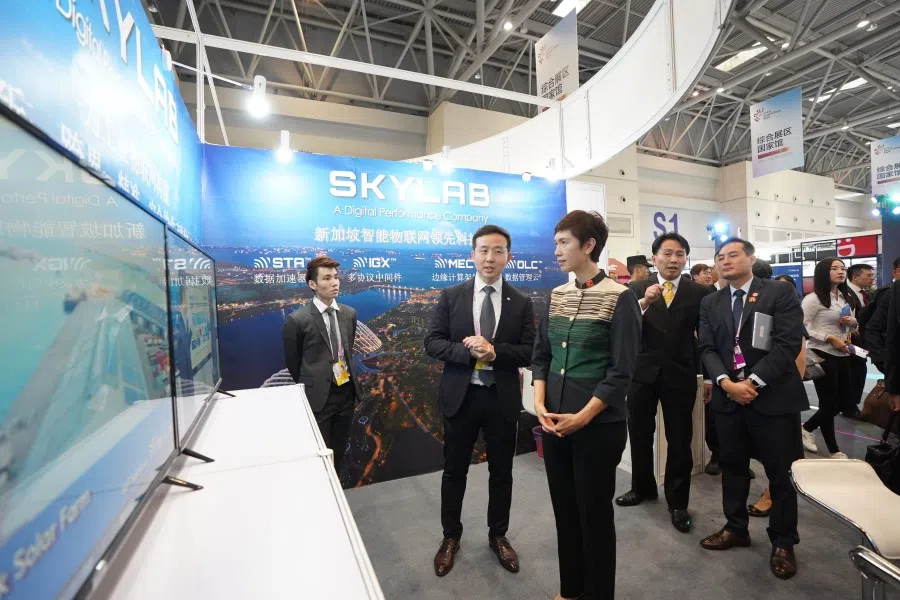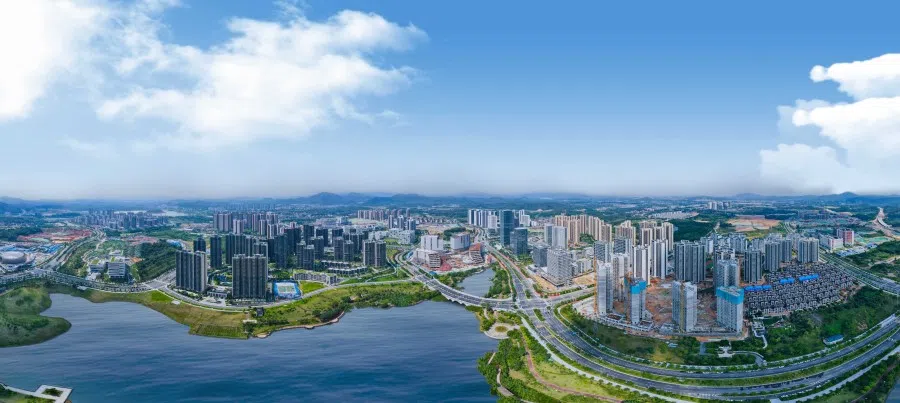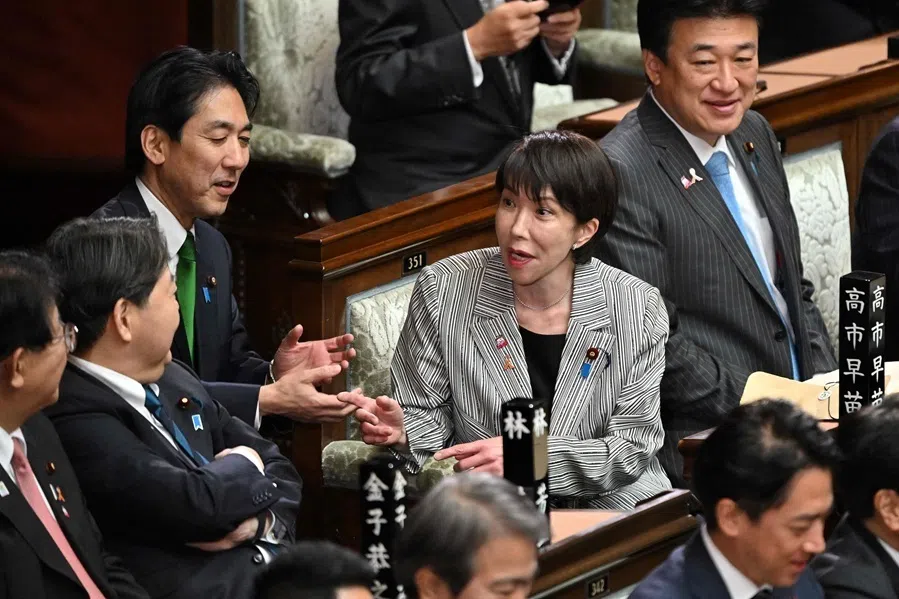Singapore DPM: Singapore can help to better connect China with Southeast Asian markets
In this op-ed in conjunction with the 17th Joint Council for Bilateral Cooperation (JCBC) which will take place on 29 December, Singapore's Deputy Prime Minister Heng Swee Keat examines how Singapore-China relations go beyond the pandemic, into areas including digital connectivity, green energy efforts, economy and trade, and even "panda diplomacy". These efforts will bring the two countries closer together in the next chapter of bilateral relations.

The strong partnership between Singapore and China goes back four decades, beginning with our participation in and support of China's reform and opening up. Tomorrow, PRC Vice-Premier Han Zheng and I will co-chair the 17th Joint Council for Bilateral Cooperation (JCBC), which is the apex bilateral cooperation platform between our two countries. First held in 2004, the JCBC allows both sides to take stock of our wide-ranging cooperation, and identify new areas of collaboration to strengthen our longstanding relations.
Over the decades, Singapore and China embarked on three government to-government projects - Suzhou Industrial Park in 1994, Tianjin Eco-City in 2008 and Chongqing Connectivity Initiative in 2015. We also elevated the Guangzhou Knowledge City to a state-level bilateral cooperation project in 2018. These projects were launched at different phases of our respective developmental journeys, and the evolving nature of collaboration exemplify the forward-looking nature of our relationship. In response to Covid-19, Singapore and China added public health as a new area of cooperation last year. The pandemic has also accelerated existing structural shifts. At tomorrow's JCBC, it is timely to also discuss how our two countries can emerge stronger as economies, societies and as part of the global community.
With the reconfiguration of global trade flows and supply chains, Singapore can strengthen China's linkages with economies in the region.

Vibrant economies
As China embarks on a new development paradigm, including the dual circulation strategy, Singapore can further contribute to China's economic growth. With the reconfiguration of global trade flows and supply chains, Singapore can strengthen China's linkages with economies in the region. A good example is the Chongqing Connectivity Initiative - New International Land-Sea Trade Corridor, which links western China and Southeast Asia. Our partnership on the trade corridor focuses on how the physical movement of goods can be complemented by digitalisation to promote seamless data flows and paperless documentation. This not only optimises supply chain operations, but can potentially speed up customs clearance, trade financing, insurance, and other related activities. The prospects have been positive, with a reported 35% increase in cargo flows along the corridor in the first half of 2021 as compared to the same period in 2020 despite the ongoing pandemic.
Apart from trade, there is also tremendous potential to strengthen digital connectivity in our region. During the pandemic, businesses and people have shifted their activities online, and this trend is here to stay. China is a global digital leader, with a digital economy that makes up one third of its GDP. In Southeast Asia, we have one of the fastest-growing digital economies, which is projected to grow to more than US$300 billion by 2025.
Despite differences in size and socio-economic circumstances, our two societies face many common challenges. We can learn from one another.
The digital collaborations between Singapore and China will benefit our companies, and galvanise efforts to integrate ASEAN's digital economy. Bilateral projects such as the Shenzhen Smart City Initiative can serve as pathfinders for new technological and policy innovations to promote trusted digital environments for businesses and consumers. For example, digital trade initiatives with blockchain solutions, will facilitate faster and more secure cross border transactions, reduce costs for businesses operating in both jurisdictions, and create new services for the digital economy. Singapore also welcomes interest from China and other like-minded partners in joining the Digital Economy Partnership Agreement, which will extend our cooperation to a plurilateral platform.

Connected societies
Singapore and China share the same goal to uplift the lives of our peoples. Despite differences in size and socio-economic circumstances, our two societies face many common challenges. We can learn from one another. One such challenge is our ageing population. We can broaden our collaboration to include how we can better care for and enable our seniors to stay active and healthy. We can also revitalise exchanges on social policies and governance, including how we can better embrace diversity, remain open to the world, and keep social mobility alive.
The key to such exchanges - not just between officials, but also between business leaders, scientists, students, and people from different parts of society - is the movement of people. The pandemic has necessitated tight border controls to contain the spread of the virus. But Singapore is exploring greater resumption of air connectivity, starting with Vaccinated Travel Lanes. Even as we tackle the Omicron variant, we will continue to restore air connectivity with key aviation partners in a safe manner. We hope to work with China in this area, including the mutual recognition of digital Covid-19 health certificates.
Covid-19 is also a reminder that all countries must act on global challenges such as climate change.
When cross-border travel eventually resumes, one priority area is the youths in our two countries. We must continue to expose them to the rich historical and cultural contexts of our two countries and the region, and develop in them a more global outlook. By resuming the exchange of people, Singapore and China can work together towards a more connected world.

Sustainable world
Covid-19 is also a reminder that all countries must act on global challenges such as climate change. Sustainable development is a critical priority not just for Singapore and China, but for every nation. Singapore launched the Singapore Green Plan 2030 earlier this year, while China has released a "1+N" policy framework to meet its 2060 carbon neutrality targets. We can work together on common areas - such as developing the circular economy, and promoting green energy trade and investments.
Through the Tianjin Eco-City project, we have been building a city that is resource-efficient and resilient to climate change. We are also strengthening cooperation to further integrate nature with the built environment and deepen biodiversity conservation. By piloting new solutions in Tianjin Eco-City in a way that is scalable to other cities, we can contribute to China's double carbon goals.
Green finance is one of our priorities in our partnerships with Chongqing, Guangdong, Shanghai, and Suzhou. Singapore can better support the green and transition financing needs of Chinese corporates. There are other areas that both countries can work together, and with partners in the region, to catalyse sustainable development. For example, we can explore how green fintech can help reduce environmental impact and channel investments towards more sustainable assets.
At the upcoming JCBC, Vice-Premier Han and I will also jointly unveil the name of the first giant panda cub born in Singapore.

Conclusion
Singapore and China have a progressive and forward-looking agenda for this year's JCBC. At the upcoming JCBC, Vice-Premier Han and I will also jointly unveil the name of the first giant panda cub born in Singapore. The cub was born on 14 August 2021 to Kai Kai and Jia Jia - our resident giant pandas which arrived in Singapore in 2012 under a loan agreement with China. The birth of the cub is a joyous occasion and a symbol of our friendship.
Looking to the future, Singapore and China have common interests in building a future that is vibrant, connected and sustainable. I am confident that through our close partnership, Singapore and China will be able to keep up with the times and maintain our strong momentum of multi-faceted cooperation, so that peoples in our two countries and the region can have a better future.
Related: Singapore's ambassador to China Lui Tuck Yew: Singapore must stay relevant to China | Singapore's prominent role in China's trade strategy | Reflections by George Yeo: Celebrating 30 years of diplomatic relations between Singapore and China | Former Chinese Vice-Minister He Yafei: Singapore and ASEAN have important roles to play in a multipolar world | Chinese ambassador to Singapore Hong Xiaoyong: China-Singapore ties tested and strengthened through the pandemic | Singapore and China: Scaling new peaks together





